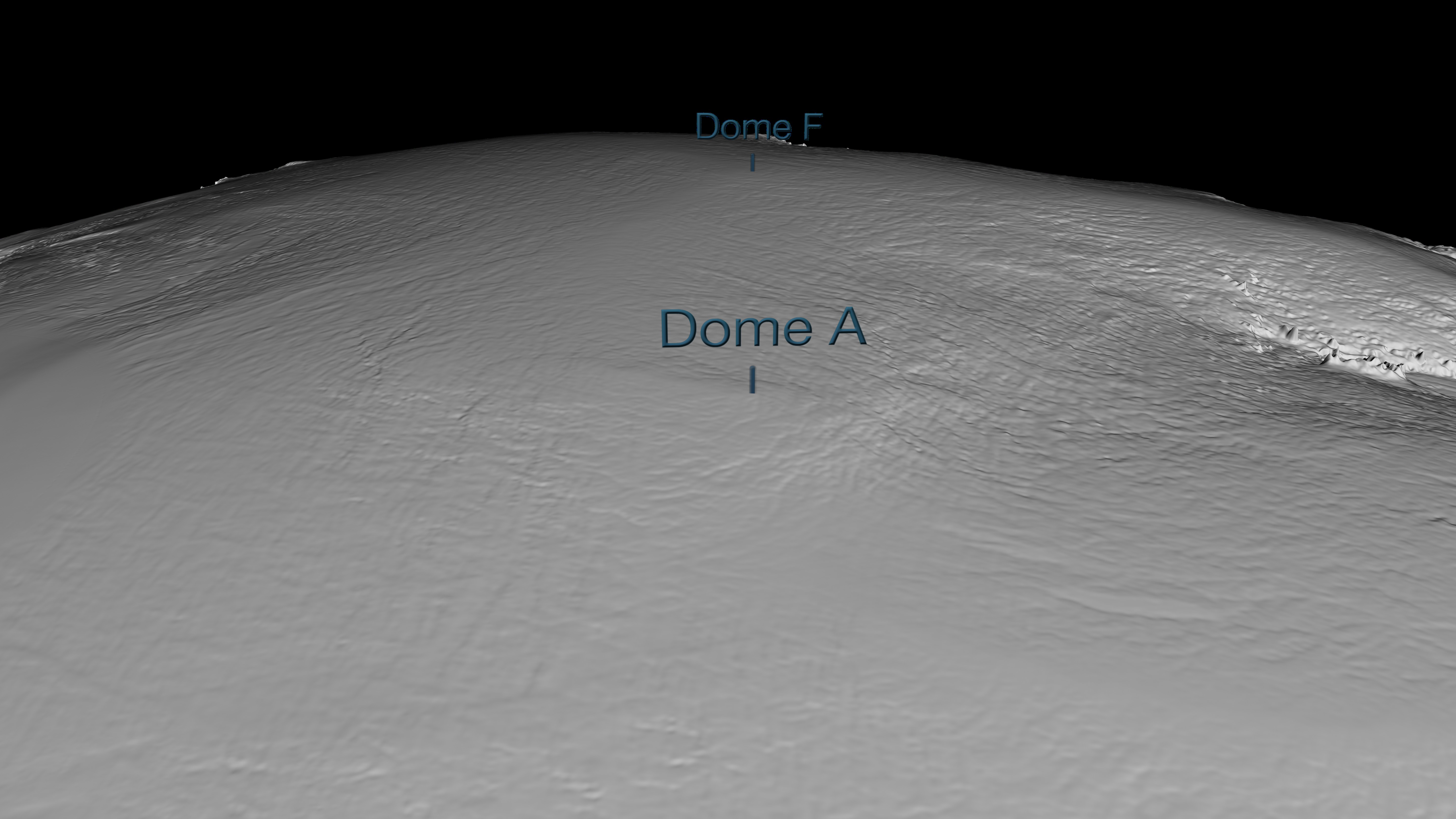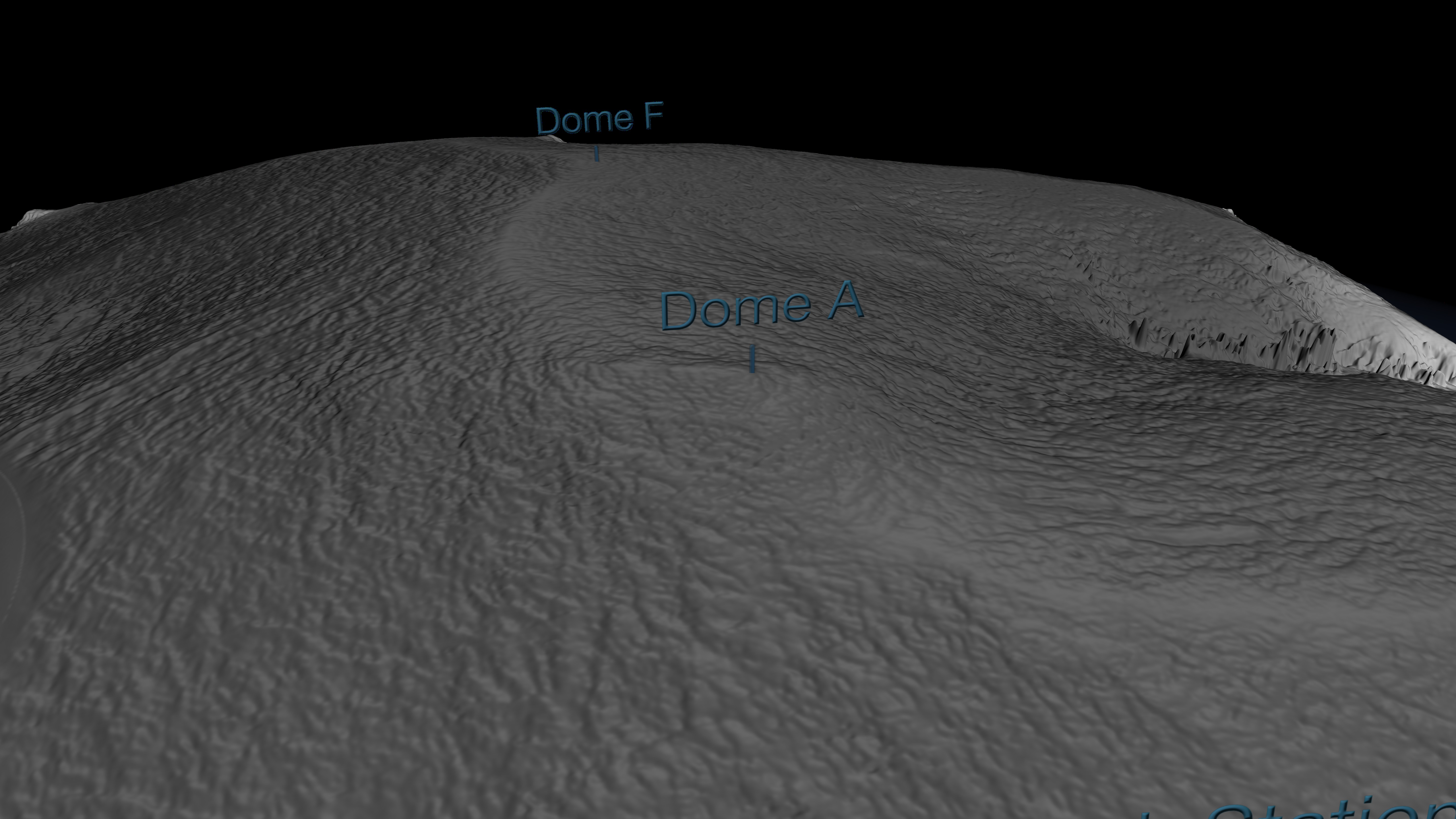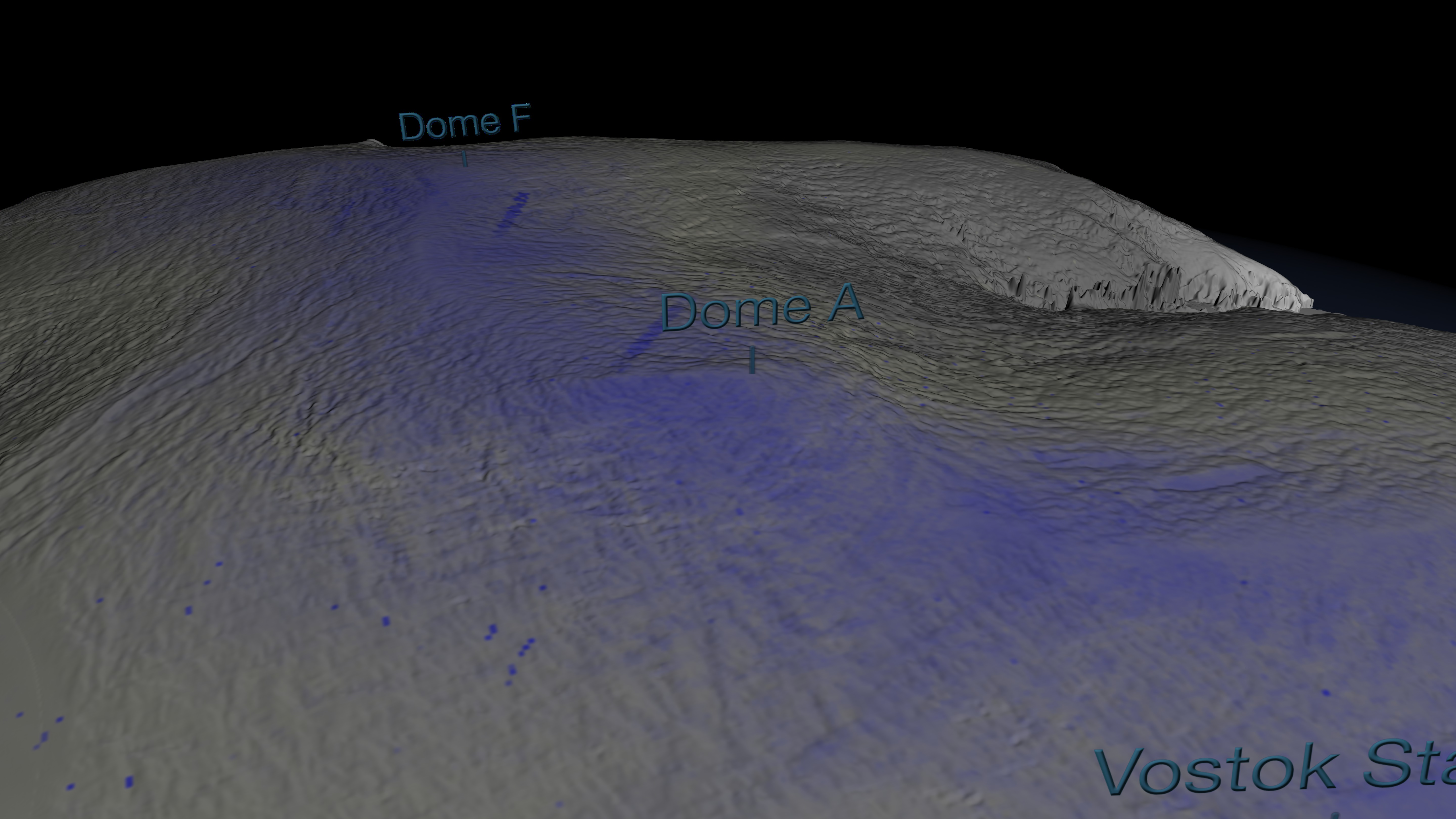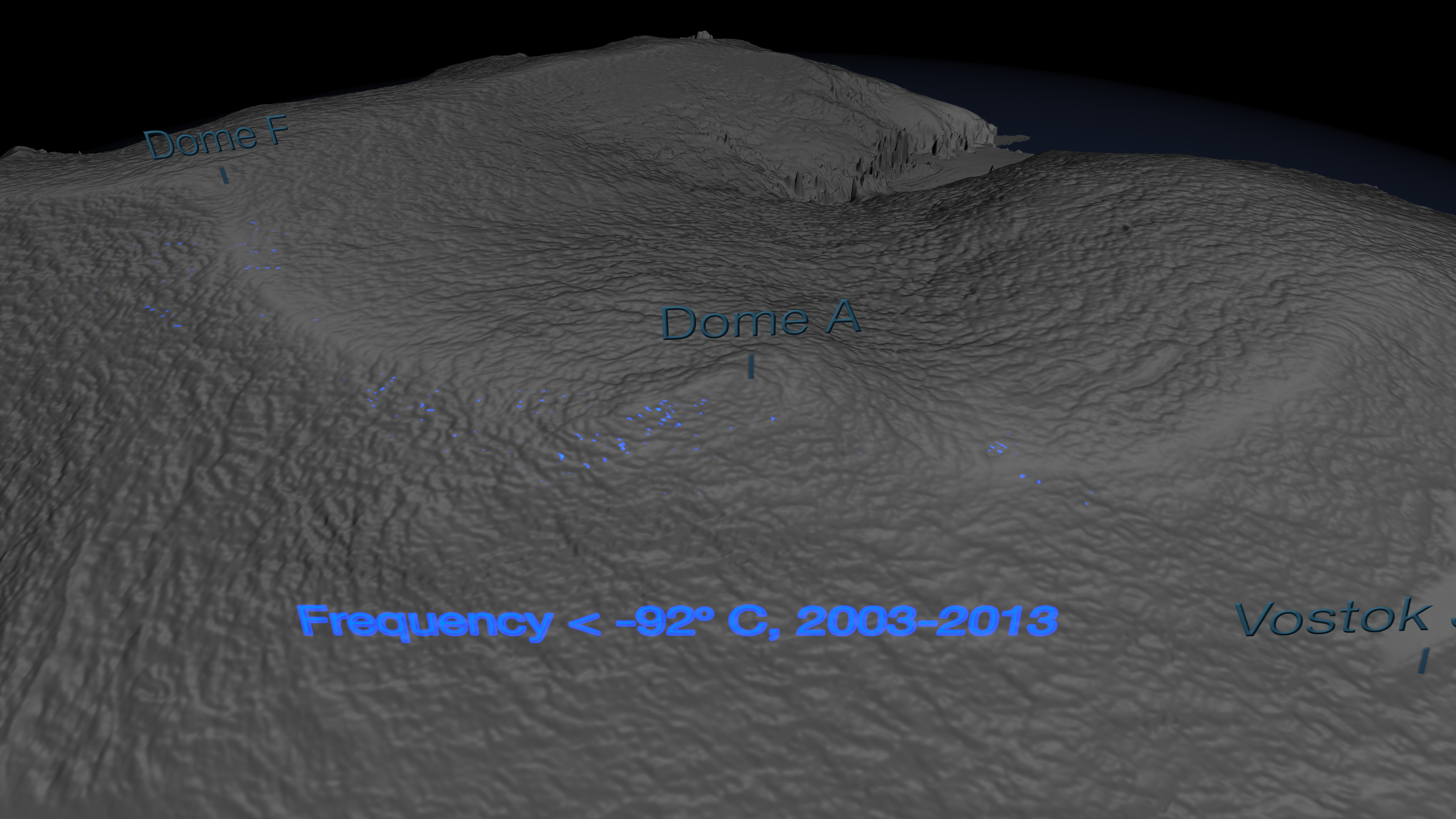Coldest Place on Earth
Scientists at the National Snow and Ice Data Center made the discovery while analyzing the most detailed global surface temperature maps to date, developed with data from remote sensing satellites including the MODIS sensor on NASA's Aqua satellite, and the TIRS sensor on Landsat 8, a joint project of NASA and the U.S. Geological Survey (USGS).
The researchers analyzed 32 years of data from several satellite instruments that have mapped Antarctica's surface temperature. Near a high ridge that runs from Dome Arugs to Dome Fuji, the scientists found clusters of pockets that have plummeted to record low temperatures dozens of times. The lowest temperature the satellites detected - minus 136° F (minus 93.2° C), on Aug. 10, 2010.
The new record is several degrees colder than the previous low of minus 128.6° F (minus 89.2° C), set in 1983 at the Russian Vostok Research Station in East Antarctica. The coldest permanently inhabited place on Earth is northeastern Siberia, where temperatures dropped to a bone-chilling 90 degrees below zero F (minus 67.8° C) in the towns of Verkhoyansk (in 1892) and Oimekon (in 1933).
Related feature story: http://www.nasa.gov/content/goddard/nasa-usgs-landsat-8-satellite-pinpoints-coldest-spots-on-earth








Visualization Credits
Greg Shirah (NASA/GSFC): Animator
Matthew R. Radcliff (USRA): Producer
Ted Scambos (NSIDC): Scientist
Terry Haran (University of Colorado): Scientist
J. L. Bamber (School of Geographical Sciences, University of Bristol, UK): Scientist
NASA's Scientific Visualization Studio
https://svs.gsfc.nasa.gov/4126
Mission:
Landsat
Data Used:
NOAA/AVHRR
July 4,2003- July 1, 2013Aqua/MODIS/Mosaic of Antarctica also referred to as: MOA1km
July 4,2003 - July 1,2013Aqua/MODIS/Frequency_less_185k also referred to as: freq185
Aqua/MODIS/Frequency_less_181K also referred to as: freq181
Keywords:
SVS >> HDTV
SVS >> Landsat
GCMD >> Location >> Antarctica
SVS >> Hyperwall
NASA Science >> Earth
GCMD keywords can be found on the Internet with the following citation: Olsen, L.M., G. Major, K. Shein, J. Scialdone, S. Ritz, T. Stevens, M. Morahan, A. Aleman, R. Vogel, S. Leicester, H. Weir, M. Meaux, S. Grebas, C.Solomon, M. Holland, T. Northcutt, R. A. Restrepo, R. Bilodeau, 2013. NASA/Global Change Master Directory (GCMD) Earth Science Keywords. Version 8.0.0.0.0











